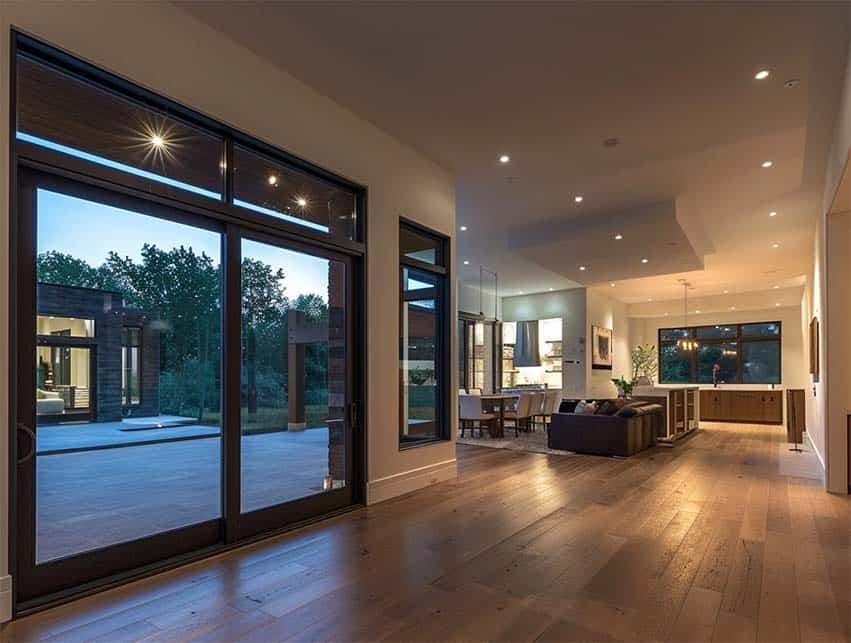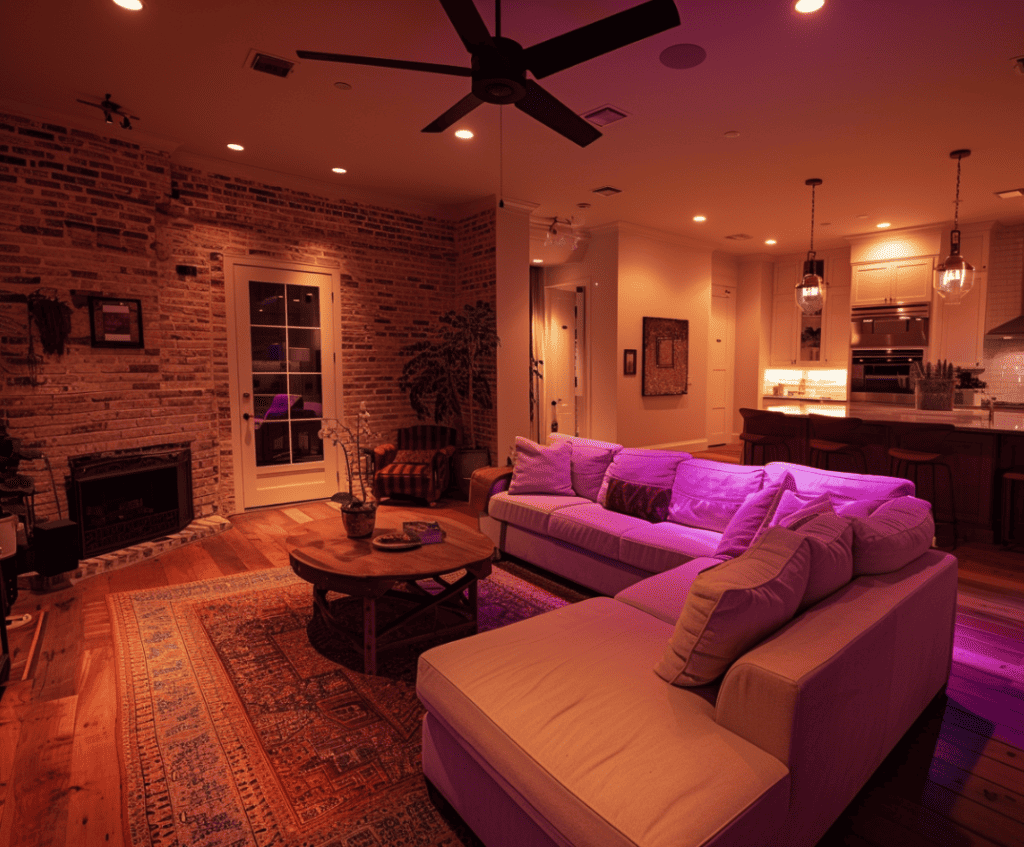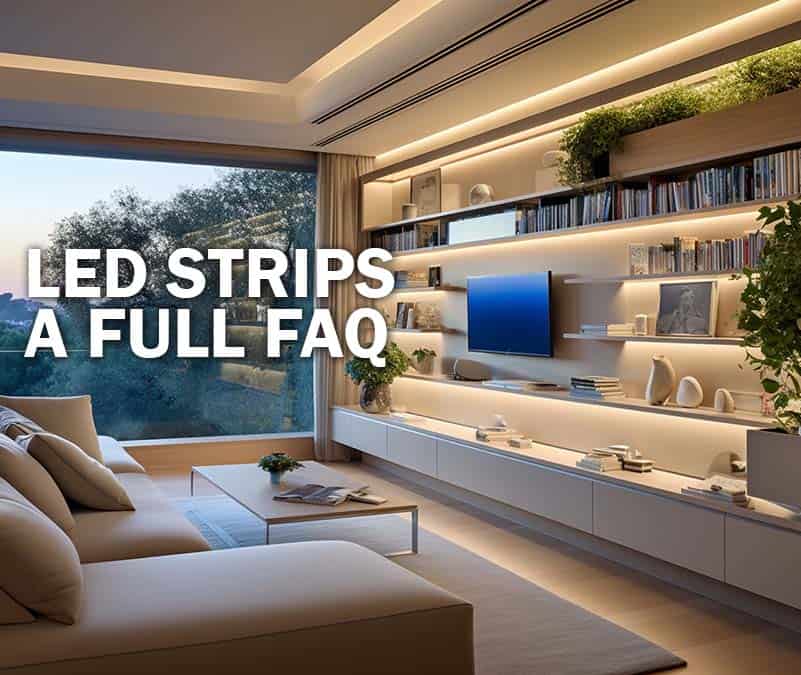Electricity Savings: Incandescent Bulbs vs. LED Lights

How switching to LED lights generates more electricity savings
As licensed residential electricians in San Antonio, we often get questions about the electricity savings homeowners would make by replacing traditional (incandescent) bulbs with LED lights.
We all have held an LED light bulb in our hands at Home Depot, and looked at the efficiency comparison with traditional bulbs printed on the product box: 15 Watts = 100 Watts. Wow, SAVINGS!
So, we decided right then and there to buy a couple of them… despite the steep price difference: LED bulbs cost $5 to $20 apiece, depending on features and where you shop. The price of a regular bulb varies between $1.50 for a generic bulb and $5 for the big brand names.
An EIA survey found in 2015 that 25% of American homes used over 40 light bulbs. Switching an entire home to LED lights looks like a major investment!
Do LED lights actually create electricity savings? Lets dive into some facts and figures.
Household lighting usage: the EIA survey results
There was a surprising finding in the survey carried out in 2015 and published in 2018 by the U.S. Energy Information Administration (EIA). The average household lighting consumption (electricity used throughout the year for lighting purposes) varied widely region by region, despite the fact that households reported similar “hours of usage” across the nation.
The lighting consumption of an average household in Oregon for instance, was 911 kWh for that year. During the same period, a household in Philadelphia consumed 1,014 kWh/year in lighting, and a household in Chicago burned 1,333 kWh.
This is a difference of more than 30% between the Pacific region and the West North Central region!
As the “hours of usage” were roughly the same from region to region, what could explain this swing?
Electricity savings, bulb types and bulb numbers
The EIA researchers found out that the difference in electricity usage for lighting purposes depends on the number of bulbs in the household and the choice of bulbs. In other words, homes using less bulbs use less electricity; homes with fewer traditional bulbs are also less power-hungry.
For an average household in the Pacific region, incandescent bulbs represented only 35% of the total number of bulbs in their home. The national average for this ratio was 44%. The average ratio for a house in Chicago was 46%.
On top of that, the total number of bulbs in an average home in Chicago was significantly higher than the total number of bulbs used in an average home in Seattle.
- More bulbs = more power-hungry home.
- More incandescent bulbs = more power-hungry home.
- Less bulbs = less power-hungry home.
- Less incandescent bulbs = less power-hungry home.
This the chart published by the EIA to summarize their findings:

So the macro-economic data is pretty clear: use more LEDs, and use a lesser number of bulbs.
This leads us to ask a technical question. If LEDs use less watts, are they as luminous as power-hungry traditional bulbs? Do I need as many lights to keep the same lighting?
Energy efficiency
The answer to this question is found by comparing the energy efficiency of 3 types of light bulbs.
Based on the research work of the Center for Nanoscale Science at Penn State University:
- An incandescent bulb is only 10% efficient, wasting 90% of its energy as heat.
- A fluorescent bulb is 85% efficient.
- An LED bulb is approximately 90% efficient.
This data is stunning.
Let’s calculate the difference in energy efficiency between LED bulbs and incandescent bulbs, using the following formula:

From published research, we know that:
- Efficiency of LEDs = 90%
- Efficiency of incandescent bulbs = 10%
The energy efficiency differential is 800% in favor of LEDs.
In other words, LEDs convert 8x more energy into light than traditional bulbs.
What do you think? Would you need as many LEDs as incandescent bulbs to light up your home?
Of course not.
But does it mean you would use 8 times less LED lights? No, and here is why.
LED lighting: general vs. zone vs. deco
The technological progress made by LED lighting in the past 10 years has enabled homeowners to do a full relooking-redesign of their indoor and outdoor lighting systems. In general, their goals are to highlight specific areas, leave others areas more intimate, and brighten the general lighting of common areas.
LEDs are often designed to be “directional”, which means they emit light in a specific direction. In contrast, traditional bulbs typically emit light in all directions, producing a more “omnidirectional” pattern. This difference makes LEDs more suitable for tasks that require directed light, while incandescent bulbs can be preferred for a softer ambiant lighting. Let’s take an example.
Example: lighting up a living room
Being licensed residential electricians, we install lighting systems in homes on a regular basis.
Let’s take a typical living room: the overhead lighting would mix recessed cans and a candelabra. Being very efficient (bright), LEDs will perform very well in the recessed cans. The homeowners may want traditional bulbs on the candelabra to get a softer lighting. They could also choose “Edison” lights (the LED bulbs that look like early 20th century lights and emit a warm yellow light).
This living room has two separate areas: one with an L-shape sofa, a coffee table, some small lamps, a large TV and a couple of wall-mounted bookshelves; the other half features the dining table, some chairs, and a dresser with lamps on top.
The lamps would receive a mix of traditional bulbs and color LED lights. The bookshelves would be lit with LED strips, while the large TV would be highlighted by a couple of low-intensity LED lights.
This is a typical lighting setup. It associates both incandescent and LED bulbs. Homeowners don’t often go “all LED, all the time”.
So while LEDs are theoretically 800% more energy-efficient than regular bulbs, most homes will use a mix, and not just LEDs. Using LEDs for general lighting and for some accent lighting will generate significant electricity savings — but not by a factor of 800%.
Our experience as electricians in San Antonio is consistent with the findings of another EIA research study published in 2017. The adoption of LED lights brought the overall “lighting efficiency” in the U.S. from 45 lumens per watt in 2001, to 58 lm/W in 2016. The study was published 7 years ago; since then, LED adoption has continue to increase. The gain in “lighting efficiency” has likely also increased.
Electricity usage and electricity savings:
Let’s now calculate the electricity savings a household in San Antonio could generate by using a mix of LED lights and incandescent bulbs.
Let’s use the average cost of 1 kWh in our city. According to EnergySage, the local average electric rates come to 13 ¢ per kWh.
We would have to calculate the number of LED lights and traditional bulbs used in this home, taking into account the wattage of each light and bulb.
A simple electricity savings calculator
To help you calculate your own electricity savings, we created a simple calculator that figures out the daily cost of lighting any room in your home based on:
- The number of LEDs and regular bulbs you use
- The wattage of each type of light
- The local average electricity rate ($0.13/kWh)
- A daily electricity usage of 5 hours on average throughout the year.
Play with it: enter the values for 1 room, calculate, change the numbers, recalculate.
Lighting Cost Calculator
Room 1
Total daily cost of lighting: $0.00
Multiply the daily cost by 365. That’s the cost of lighting that room over a year.
Re-use the calculator to figure the daily cost for each room in your home. Multiply each result by 365. Finally, add up the results to get the total cost for your home.
Now, compare with your power bill and measure the electricity savings when you enter more LEDs and less regular bulbs.
Playing with this simple calculator, you can measure how significant your electricity savings can be when you change the proportion of LED lights vs. traditional light bulbs, the total number of lights you use, and the wattage of each light.
Note: We have updated the calculator to enable you to calculate the cost of lighting multiple rooms in just one fell swoop. Skip to the bottom to use the new calculator.
The more LEDs you use, the more electricity savings you generate.
Cost of purchasing LEDS vs. incandescent bulbs
To achieve a more accurate view of your total cost, you must take into account the price difference between LED lights and traditional bulbs.
The calculator below enables you to figure out the yearly cost for your entire home. It takes into account the lifespan of a good LED light (50,000 hours) and of a traditional bulb (2,000 hours). If you light up your home 5 hours a day, every incandescent bulb in your home will need to be replaced once a year; an LED light will only be changed every 2.7 years. This is integrated in the calculation.
Yearly Purchase Cost of Light Bulbs
Total yearly cost of purchase of light bulbs: $0.00
Substract this yearly cost from your annual lighting costs to obtain your yearly electricity savings.
Leave the grunt work to your licensed residential electrician
As licensed residential electricians in San Antonio and its region, we do this type of calculations more accurately every day. We know by experience that switching to a LED lighting system generates significant electricity savings each year over many years.
That’s not the only advantage of LED lights. They really can change the vibe of your entire house and of your outdoor space too.
They enable you to sculpt the lighting areas; play with colors; highlight certain architectural features of your home; make a piece of art that you really like stand out from the background.
When we help homeowners to create their dream lighting system, we take care of all aspects of the design and installation. This includes calculating all costs: in this way, you know what you will spend and save in Year 1 and the following years.
If you have a LED lighting project in mind, call All Star Electric at (210) 391-0274 to ask for help. We will review your project and estimate its cost. This estimate is free and there is no commitment from you.
Additional resources:
Smart LED lighting system for a home
All Star Electric rated A+ by the San Antonio BBB for 14 years!
Updated Daily Lighting Cost Calculator
Our updated calculator enables you to add as many rooms as you want to the lighting cost calculation.
Input your values, add as many rooms as needed
Room 1
Total daily cost of lighting: $0.00
FAQ
LED bulbs are 90% efficient, incandescent bulbs are 10% efficient. The resulting energy efficiency differential is 800% in favor of LEDs. LEDs convert 8x more energy into light than traditional bulbs.
LED bulbs sell for $5 to $20 apiece, depending on features and where you shop. A generic incandescent bulb sells for $1.50, and big brands up to $5.
True. According to the 2015 RECS survey, the number of bulbs used in a home directly impacts electricity usage. The fewer the bulbs, the lower its energy usage. The other compounding factor is the number of incandescent bulbs vs. LED lights. bulbs, tend to be less power-hungry.
Yes, according to the 2015 RECS survey, a household in Oregon consumed an average 911 kWh/year, whereas a household in Chicago consumed 1,333 kWh/year, a difference of over 30%.
Only to the degree you want to create different vibes. Use LED lights for general and accent lighting, and traditional bulbs for a softer ambient lighting.




























